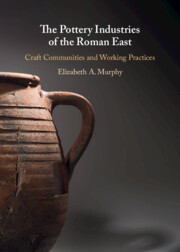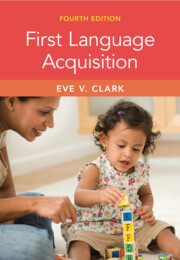Refine search
Actions for selected content:
279 results
Chapter 6 - Final remarks about delirium and the notion of disease: a diachronic look
- from Part I - Delirium
-
- Book:
- Impaired Consciousness in Ancient Medical Texts
- Published online:
- 04 December 2025
- Print publication:
- 04 December 2025, pp 76-82
-
- Chapter
-
- You have access
- Open access
- HTML
- Export citation
Practice, Reason, and the Good: Human Nature and MacIntyrean Business Ethics
-
- Journal:
- Business Ethics Quarterly , First View
- Published online by Cambridge University Press:
- 27 October 2025, pp. 1-29
-
- Article
-
- You have access
- Open access
- HTML
- Export citation
Chapter 9 - Looking Ahead
- from Part III - Looking Ahead
-
- Book:
- Making Meaning of Justice and Peace
- Published online:
- 06 December 2025
- Print publication:
- 25 September 2025, pp 171-185
-
- Chapter
- Export citation
Talking with Poets about Taxes: Applying the Humanities at a Regional Public
- Part of
-
- Journal:
- Public Humanities / Volume 1 / 2025
- Published online by Cambridge University Press:
- 28 August 2025, e125
-
- Article
-
- You have access
- Open access
- HTML
- Export citation
8 - Leadership and critical reflective practice
- from Part 2 - Leads Self
-
-
- Book:
- Leading and Managing Health Services
- Published online:
- 15 August 2025
- Print publication:
- 28 August 2025, pp 87-98
-
- Chapter
- Export citation
2 - Leading and managing: Frameworks and theories
- from Part 1 - Introduction
-
-
- Book:
- Leading and Managing Health Services
- Published online:
- 15 August 2025
- Print publication:
- 28 August 2025, pp 15-28
-
- Chapter
- Export citation
Chapter 1 - A vision for the Arts in education
- from Part 1 - Why: the arts in education and society
-
- Book:
- Teaching the Arts
- Published online:
- 28 July 2025
- Print publication:
- 06 August 2025, pp 4-30
-
- Chapter
- Export citation
Enhancing Pediatric Nurses’ Knowledge, Attitude, and Practice Regarding Health Care-Acquired Infections: A Quasi Experimental Study
-
- Journal:
- Disaster Medicine and Public Health Preparedness / Volume 19 / 2025
- Published online by Cambridge University Press:
- 23 June 2025, e159
-
- Article
-
- You have access
- Open access
- HTML
- Export citation
Chapter 13 - How do I make the most of professional experience?
- from Part 4 - Developing professional practice
-
-
- Book:
- Introduction to Education
- Published online:
- 14 June 2025
- Print publication:
- 02 June 2025, pp 340-368
-
- Chapter
- Export citation
Chapter 8 - How do I implement effective teaching and learning?
- from Part 2 - Understanding learning and understanding teaching
-
-
- Book:
- Introduction to Education
- Published online:
- 14 June 2025
- Print publication:
- 02 June 2025, pp 181-213
-
- Chapter
- Export citation
1 - International Law at the Time of the League of Nations
-
-
- Book:
- The Cambridge History of International Law
- Published online:
- 01 May 2025
- Print publication:
- 29 May 2025, pp 6-40
-
- Chapter
- Export citation
10 - The Micro-politics of International Commissions
- from People, Practices, and Performance
-
-
- Book:
- Ways of Seeing International Organisations
- Published online:
- 17 April 2025
- Print publication:
- 24 April 2025, pp 186-207
-
- Chapter
-
- You have access
- Open access
- HTML
- Export citation
Complex, contradictory and confusing: exploring consumer dilemmas in navigating sustainable healthy nutrition knowledge
- Part of
-
- Journal:
- Proceedings of the Nutrition Society , First View
- Published online by Cambridge University Press:
- 07 April 2025, pp. 1-12
-
- Article
-
- You have access
- Open access
- HTML
- Export citation

The Pottery Industries of the Roman East
- Craft Communities and Working Practices
-
- Published online:
- 20 March 2025
- Print publication:
- 03 April 2025
Chapter 1 - The Scientific Premises for the Imperial artes
- from Part I
-
- Book:
- The <I>artes</I> and the Emergence of a Scientific Culture in the Early Roman Empire
- Published online:
- 22 March 2025
- Print publication:
- 13 February 2025, pp 15-38
-
- Chapter
- Export citation
Introduction - The Idea of the artes
-
- Book:
- The <I>artes</I> and the Emergence of a Scientific Culture in the Early Roman Empire
- Published online:
- 22 March 2025
- Print publication:
- 13 February 2025, pp 1-12
-
- Chapter
- Export citation
Chapter 17 - Making Space and Beating a Path to a Marketplace: The Uneven Spatial Ordering of Christmas Tourism Markets
- from Part IV - Markets in Motion: Places and Spaces
-
-
- Book:
- Market Studies
- Published online:
- 22 November 2024
- Print publication:
- 21 November 2024, pp 280-293
-
- Chapter
- Export citation
Knowledge, Attitudes, and Practices towards Acceptance of Health Science Information among WeChat Public Account Users: A Cross-Sectional Study – ERRATUM
-
- Journal:
- Disaster Medicine and Public Health Preparedness / Volume 18 / 2024
- Published online by Cambridge University Press:
- 20 November 2024, e276
-
- Article
-
- You have access
- Open access
- HTML
- Export citation
10 - The Light of Nature and the Uses of Knowledge
- from Part V - Conclusion
-
- Book:
- Curating the Enlightenment
- Published online:
- 07 December 2024
- Print publication:
- 07 November 2024, pp 337-350
-
- Chapter
- Export citation

First Language Acquisition
-
- Published online:
- 01 November 2024
- Print publication:
- 20 June 2024
-
- Textbook
- Export citation
